What is a blog: meaning, elements, types, and more!
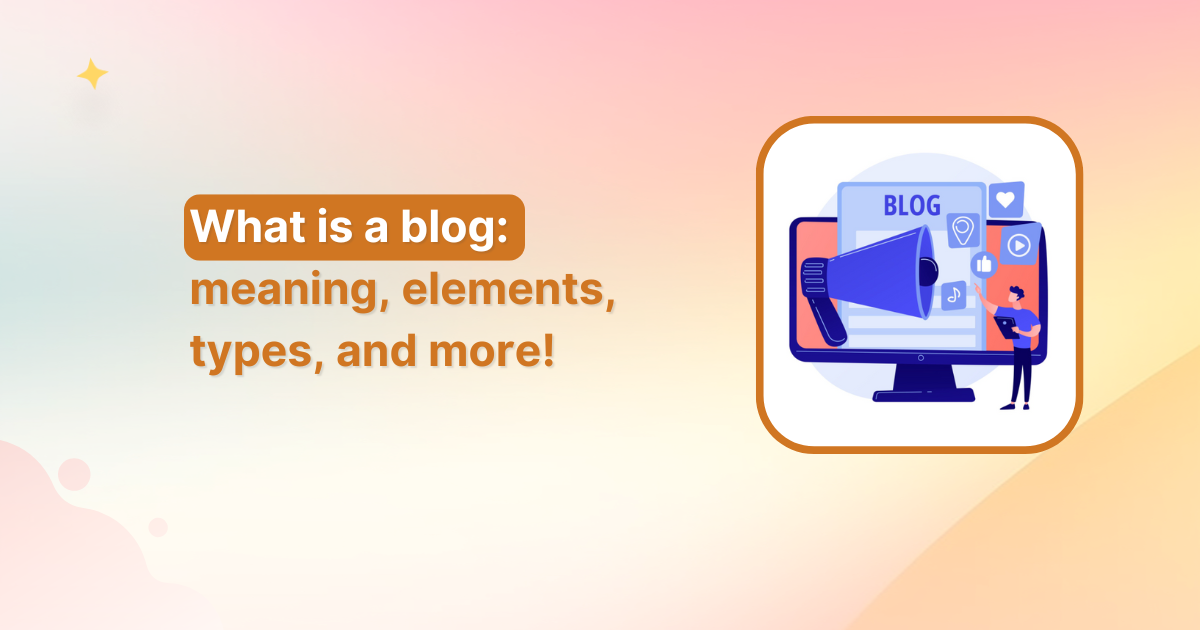
Whether you’re completely new to the digital world or looking to expand your online presence, understanding what a blog is is essential in today’s content-driven landscape.
A blog serves as your digital voice, allowing you to share ideas, build communities, and even generate income.
In this comprehensive guide, we’ll explore everything you need to know about blogs, from their basic definition to how to improve your blogs for engagement and other advanced monetization strategies.
What is a blog?
A blog (short for “weblog”) is a regularly updated website or web page that features content presented in reverse chronological order, with the newest posts appearing first. Blogs typically contain informal, conversational content written by an individual or team of contributors who share their thoughts, experiences, expertise, or opinions on specific topics.
Originally emerging in the late 1990s as online diaries, blogs have evolved into powerful platforms for personal expression, business marketing, education, and community building.
Today, blogs serve multiple purposes, from personal storytelling to professional content marketing strategies that drive business growth.
A blog is never static; it’s always changing and evolving. Fresh posts keep readers coming back for more. Comments and social sharing turn it into an ongoing conversation.
What is a blog post?
A blog post is an individual entry or article published on a blog. Each blog post typically focuses on a specific topic, question, or theme and can range from a few hundred to several thousand words.
Blog posts are the building blocks of any blog, and they’re what readers come to consume, share, and engage with.
Also read: How to structure a blog? Complete guide for content success
Who is a blog for?
Blogs serve virtually everyone in the digital ecosystem:
- Individuals use blogs for personal expression, sharing hobbies, documenting life experiences, and building personal brands.
- Businesses utilize blogs as powerful marketing tools to attract customers, demonstrate expertise, improve search engine rankings, and build trust with their audience.
- Professionals utilize blogs to establish thought leadership in their fields, network with peers, and create additional income streams through various monetization methods.
- Educators and students find blogs invaluable for sharing knowledge, facilitating discussions, and creating collaborative learning environments.
What is included in a blog?
Understanding the essential components of a blog helps you create a more professional and user-friendly experience for your readers.
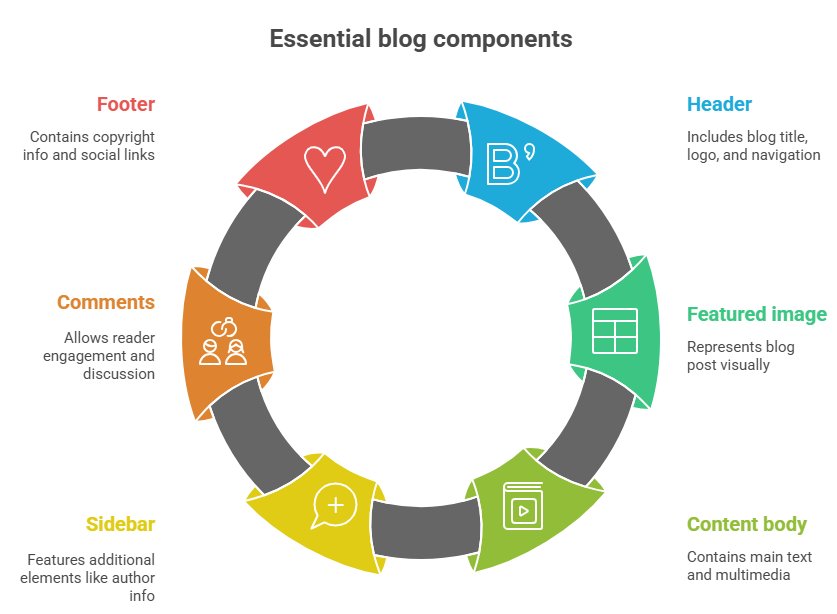
Header
The header appears at the top of your blog and typically includes your blog’s title, logo, navigation menu, and sometimes a tagline. It’s the first thing visitors see and should clearly communicate your blog’s purpose and brand identity.
Featured image
A featured image is the main visual element that represents each blog post. It appears in social media shares, search results, and on your blog’s homepage. High-quality, relevant featured images significantly improve engagement and click-through rates.
Content body
The content body contains the main text of your blog post, including headings, paragraphs, images, videos, and other multimedia elements. This is where you deliver value to your readers through informative, entertaining, or inspiring content.
Sidebar
The sidebar typically appears alongside the main content and contains additional elements like:
- About the author section
- Popular posts
- Categories and tags
- Email signup forms
- Social media links
- Advertisement spaces
Comments
The comments section allows readers to engage with your content, ask questions, share their opinions, and build a community around your blog. Encouraging and moderating comments helps foster meaningful discussions and increases reader engagement.
Not every blog contains a comments section, though. It is dependent on the blog niche and the author’s preference about whether they want to open up a blog to public comments.
Footer
The footer appears at the bottom of your blog and usually contains copyright information, additional navigation links, social media icons, and sometimes a brief description of your blog or contact information.
Types of blogs
The blogging world offers numerous niches and styles to match different interests, expertise levels, and goals.
Personal blogs
Personal blogs serve as digital diaries where individuals share their thoughts, experiences, and life updates. These blogs often have a casual, conversational tone and cover various topics from daily life to personal growth journeys.
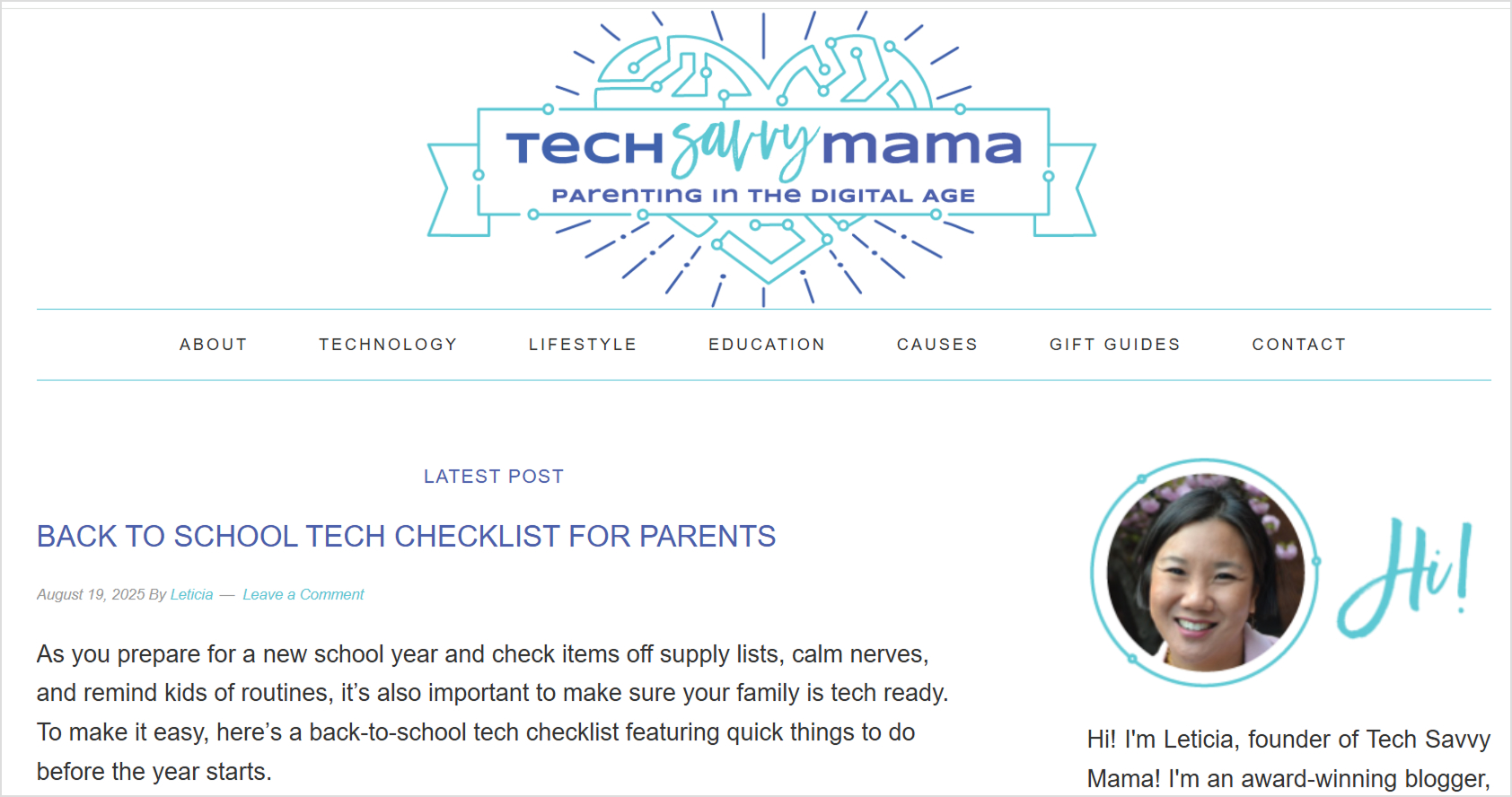
Niche blogs
Niche blogs focus on specific topics or industries, targeting audiences with particular interests. Examples include parenting blogs, pet care blogs, or tech blogs related to specific niches. These blogs often perform well because they serve dedicated communities with specific needs.
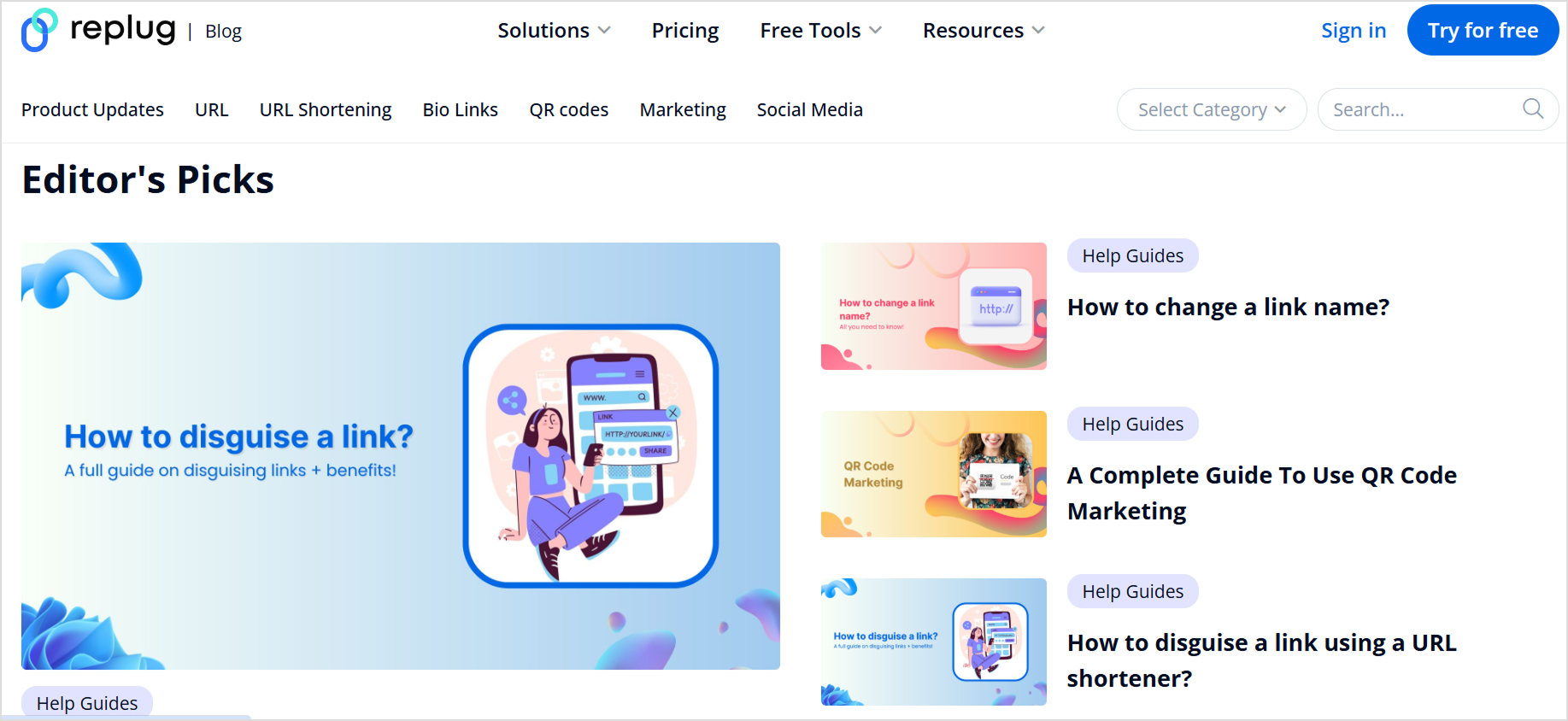
Business/corporate blogs
Business blogs help companies connect with customers, share industry expertise, and improve their online visibility. They’re essential components of content marketing strategies and help establish brands as thought leaders in their respective fields.
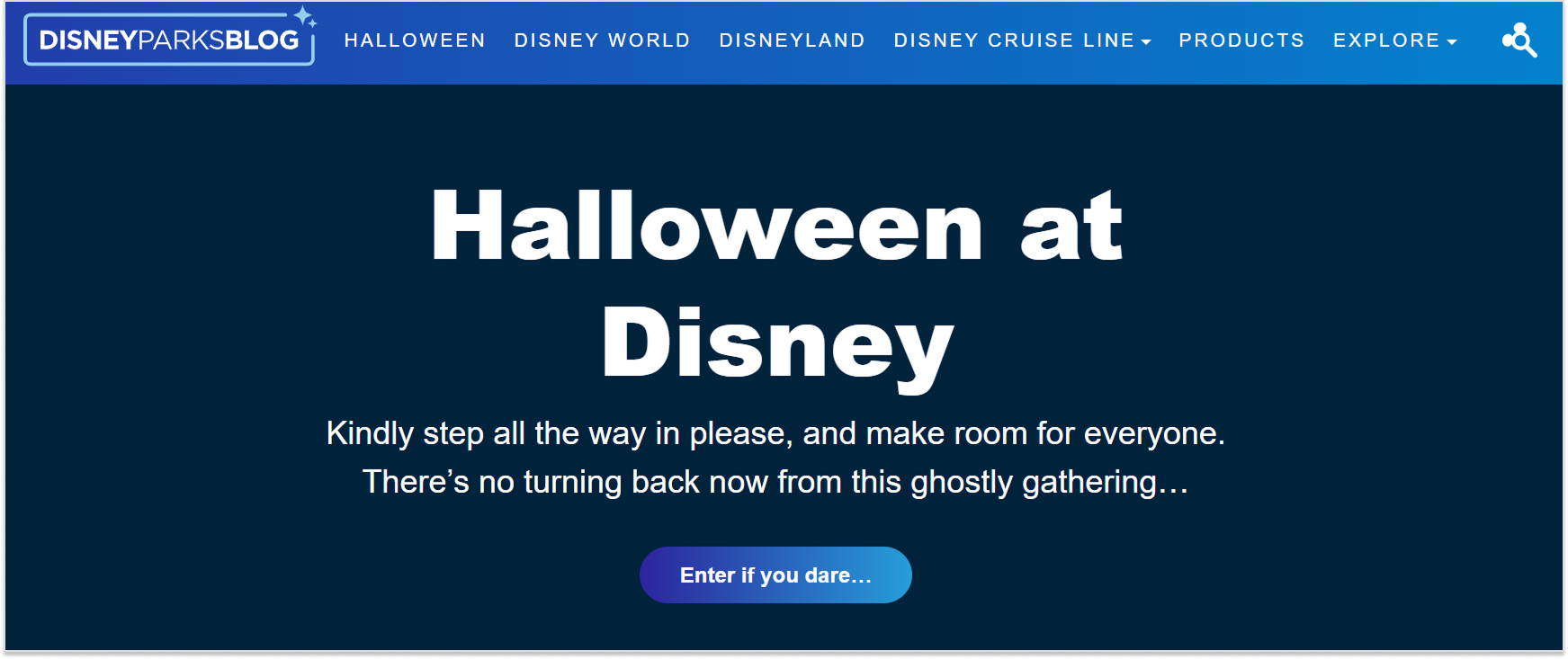
Lifestyle blogs
Lifestyle blogs cover broad topics related to daily living, including home decor, fashion, relationships, wellness, and personal development. They often blend multiple interests to reflect the blogger’s overall lifestyle approach.

Travel blogs
Travel blogs document journeys, share destination guides, provide travel tips, and inspire others to explore new places. Many travel bloggers monetize through affiliate marketing, sponsored content, and travel partnerships.
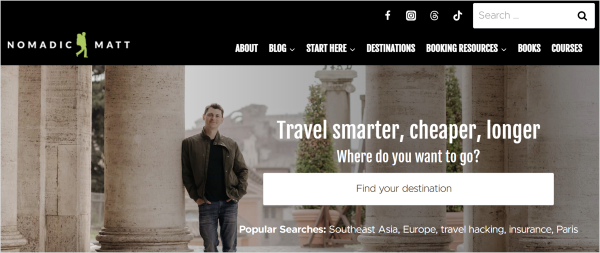
Food blogs
Food blogs feature recipes, restaurant reviews, cooking techniques, and food photography. They’re particularly visual and often include step-by-step instructions, ingredient lists, and nutritional information.
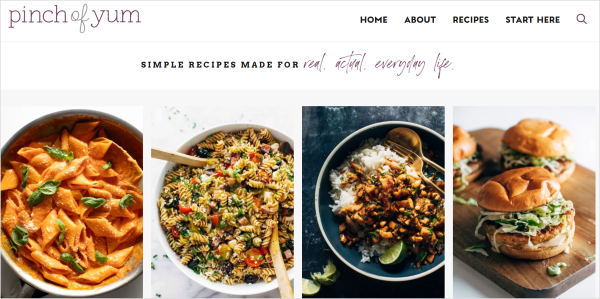
Health & fitness blogs
Health and fitness blogs focus on wellness topics, including workout routines, nutrition advice, mental health, and healthy lifestyle tips. They often combine personal experiences with research-based information.
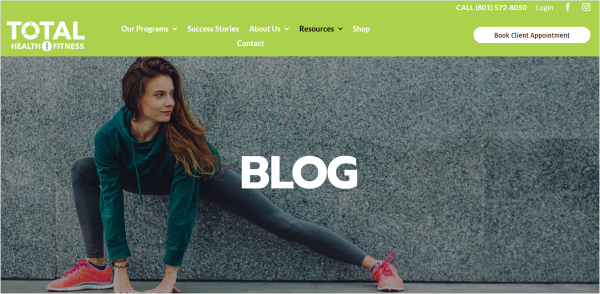
SaaS/technology blogs
Technology blogs cover software reviews, gadget comparisons, tech news, tutorials, and industry analysis. They serve both consumers looking for purchasing advice and professionals seeking industry insights.

Educational blogs
Educational blogs provide learning resources, tutorials, academic insights, and skill development content. They’re valuable for students, professionals, and lifelong learners seeking to expand their knowledge.
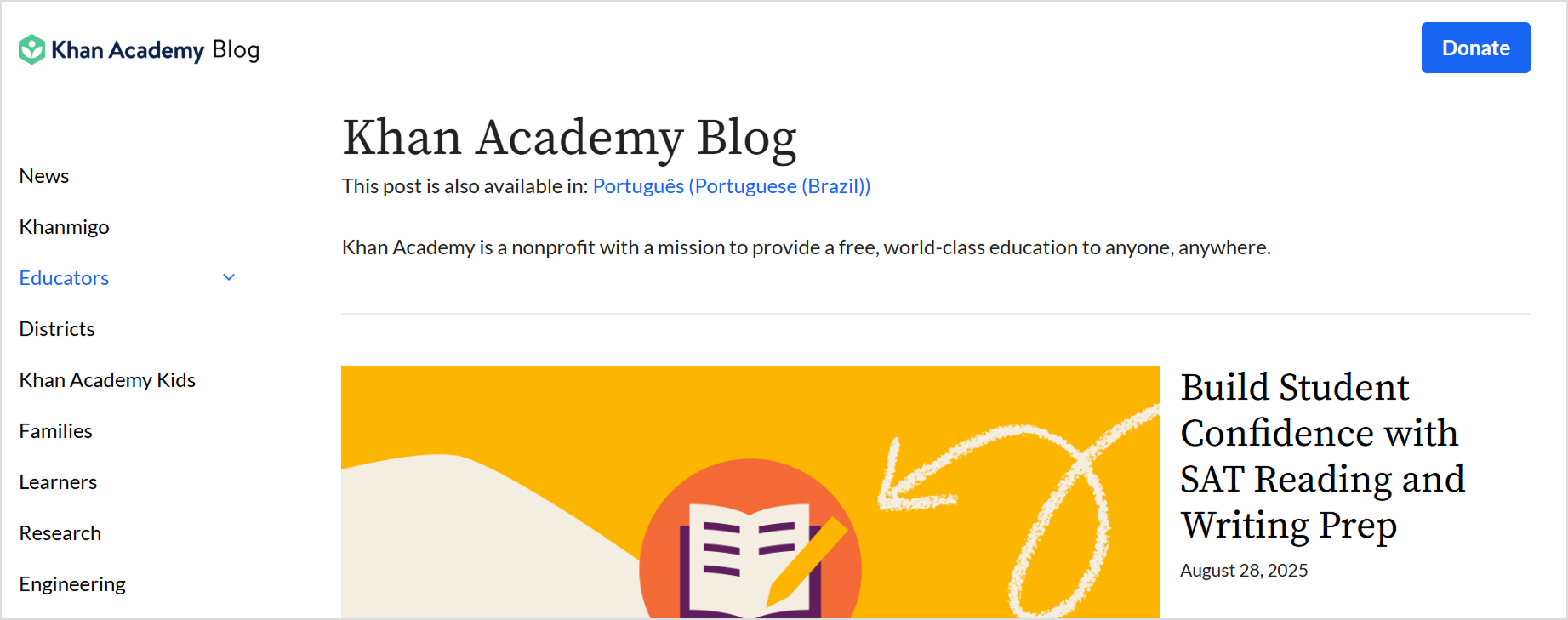
News & current affairs blogs
These blogs focus on breaking news, political commentary, social issues, and current events analysis. They often provide alternative perspectives on mainstream news coverage.
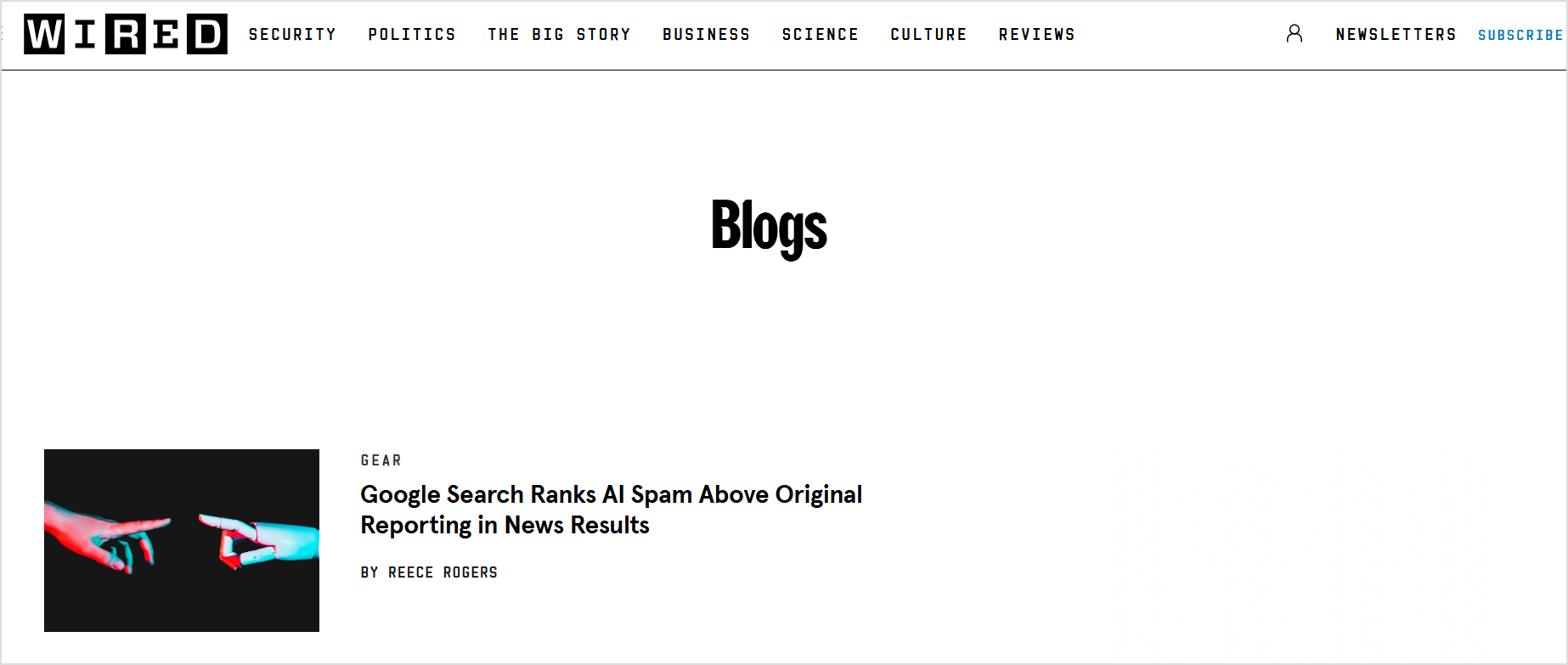
Fashion & beauty blogs
Fashion and beauty blogs showcase style inspiration, product reviews, makeup tutorials, and trend analysis. They heavily rely on visual content and often partner with brands for sponsored content.

Entertainment blogs
Entertainment blogs cover movies, music, television, celebrity news, and pop culture topics. They engage audiences through reviews, interviews, and commentary on entertainment industry developments.
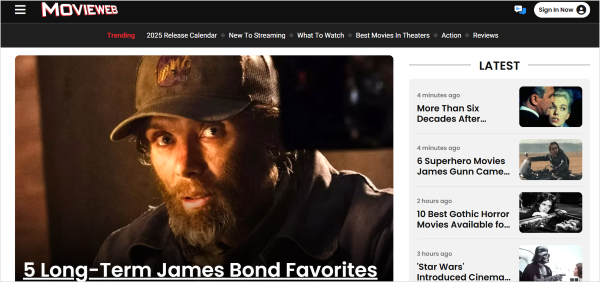
Benefits of a blog
Understanding the advantages of blogging can help you maximize your blog’s potential and achieve your goals quickly and easily.
Share knowledge & expertise
Blogging provides an exceptional platform for sharing your knowledge and establishing yourself as an expert in your field. When you consistently publish valuable, well-researched content, you build credibility and trust with your audience. This expertise can lead to speaking opportunities, consulting offers, and professional recognition.
Moreover, using AI to write blog posts can help you maintain consistency and quality while scaling your content production efforts.
Build an online presence & personal brand
A blog serves as the foundation of your digital identity, allowing you to showcase your personality, values, and unique perspective. Through consistent posting and authentic storytelling, you create a memorable brand that distinguishes you from competitors and attracts like-minded individuals.
Your blog becomes a central hub where people can learn about you, your work, and your expertise, making it an invaluable tool for career advancement and business development.
Engage with an audience
Blogs create opportunities for meaningful interactions with your audience through comments, social media shares, and email communications. This engagement builds community around your content and provides valuable feedback that can guide future blog posts and business decisions.
Understanding how to use tone of voice in writing helps you connect more effectively with your readers and build stronger relationships.
Monetization opportunities
Blogging opens multiple revenue streams, including:
- Affiliate marketing commissions
- Sponsored content partnerships
- Digital product sales
- Online course creation
- Consulting services
- Advertisement revenue
- Membership sites
Many successful bloggers generate substantial income through diversified monetization strategies, though it typically requires time, consistency, and strategic planning.
Networking & collaboration
Blogging connects you with other professionals, industry leaders, and potential collaborators in your field. Guest posting opportunities, podcast interviews, and joint ventures often emerge from blogging relationships.
These connections can lead to career opportunities, business partnerships, and valuable learning experiences that extend far beyond your blog.
Long-term results
Unlike social media posts that quickly disappear from feeds, blog content has lasting value. Well-optimized blog posts can continue attracting readers and generating results for months or years after publication, making blogging an excellent long-term investment in your online presence.
Uses of blogs
Blogs serve various practical purposes across different contexts and industries.
Business
Businesses use blogs to:
- Attract potential customers through valuable content
- Improve search engine rankings and online visibility
- Demonstrate industry expertise and build trust
- Generate leads through content marketing
- Support customer service by answering common questions
- Share company news and updates
- Humanize their brand through storytelling
SEO
Blogs play a crucial role in search engine optimization by:
- Providing fresh, regularly updated content that search engines favor
- Creating opportunities to target long-tail keywords
- Building internal linking structures that improve site architecture
- Attracting backlinks from other websites
- Increasing time spent on the site through engaging content
- Improving domain authority through consistent publishing
Related: 12 best AI SEO tools in 2025
Marketing
Blogs support marketing efforts through:
- Content marketing campaigns that educate and engage audiences
- Lead generation through valuable resources and email capture
- Social media content creation and sharing
- Influencer partnerships and guest posting opportunities
- Brand storytelling and personality development
- Customer retention through ongoing value delivery
Blog vs. Website
While blogs and websites both exist on the internet, they serve different purposes and have distinct characteristics.
Blogs are dynamic, regularly updated platforms focused on fresh content creation. They feature:
- Chronological content organization
- Regular posting schedules
- Interactive elements like comments
- Informal, conversational tone
- RSS feeds for content syndication
- Author bylines and publication dates
Websites are typically more static, serving as digital brochures or portfolios. They feature:
- Fixed navigation and page structure
- Less frequent updates
- Formal, professional presentation
- Service or product focus
- Contact forms and business information
- Timeless content that doesn’t require frequent updates
Many successful online presences combine both approaches, using a website for core business information and a blog for ongoing content marketing and audience engagement.
Difference between a wiki and a blog
While both wikis and blogs publish content online, they operate on fundamentally different principles:
Blogs are usually written by individuals or small teams. They organize content in chronological order and often share personal opinions or brand perspectives. The creators also maintain full control over what gets published and updated.
Wikis are collaborative platforms where many users can edit and contribute content. They focus on facts instead of personal opinions and organize information by topic rather than by time. The goal is to provide neutral, encyclopedic coverage of each subject.
The most famous example of a wiki is Wikipedia, while popular blogs include personal lifestyle blogs, company blogs, and niche industry publications.
How to start a blog?
Starting a blog involves several key steps that require a lot of discussion in detail. We’ll be discussing all these steps and requirements in a separate article, but for now, let’s go through the key points quickly:
Step 1: Pick a niche
Choose a specific topic or area of expertise that you’re passionate about and knowledgeable in. A focused niche helps you:
- Attract a targeted audience
- Establish expertise more quickly
- Create consistent, cohesive content
- Monetize more effectively
- Compete in less saturated markets
Step 2: Choose a platform & domain
Select a blogging platform that matches your technical skills and goals. Popular options include:
- WordPress.org (most flexible and professional)
- WordPress.com (hosted solution)
- Blogger (simple and free)
- Medium (built-in audience)
- Squarespace (design-focused)
Step 3: Design your blog
Create an attractive, user-friendly design that reflects your brand and makes navigation easy for readers. Key design elements include:
- Clean, readable typography
- Consistent color scheme
- Intuitive navigation menu
- Mobile-responsive layout
- Fast loading times
- Professional appearance
Step 4: Create valuable content
Develop high-quality content that serves your audience’s needs and interests. Focus on:
- Solving problems or answering questions
- Providing unique insights or perspectives
- Using clear, engaging writing
- Including relevant images and multimedia
- Optimizing for search engines
- Maintaining a consistent posting schedule
Finally, you also need to promote to build an audience through active engagement. Develop strategies for reaching your target readers and encouraging them to return for more content.
How to promote your blog?
Effective blog promotion combines multiple strategies to maximize your content’s reach and impact. These key strategies are:
Share on social media
Use social media platforms to share your content and engage with your audience:
- Create platform-specific content for Facebook, Twitter, Instagram, and LinkedIn
- Join relevant groups and communities
- Use appropriate hashtags to increase discoverability
- Engage with other users’ content to build relationships
- Share behind-the-scenes content to humanize your brand
Optimize organic traffic via SEO
Optimize your content for search engines to attract organic traffic:
- Research and target relevant keywords
- Create compelling meta titles and descriptions
- Use header tags to structure your content
- Build internal and external links
- Optimize images with alt text
- Focus on page loading speed
- Use SEO writing tools to improve your SEO efforts.
Engage in communities
Participate in online communities where your target audience is located:
- Join industry-specific forums and discussion boards
- Participate in Facebook groups and LinkedIn communities
- Comment thoughtfully on other blogs in your niche
- Attend virtual events and webinars
- Share valuable insights without being overly promotional
Build an email list
Email marketing remains one of the most effective ways to nurture relationships with your audience:
- Offer valuable lead magnets like ebooks or checklists
- Create compelling email signup forms
- Send regular newsletters with exclusive content
- Segment your list based on interests and behaviors
- Provide consistent value in every email
Collaborate
Partner with other bloggers and content creators to expand your reach:
- Write guest posts for established blogs
- Invite guest contributors to your blog
- Participate in podcast interviews
- Collaborate on joint projects or challenges
- Cross-promote content with complementary brands
Summing it up
Understanding what a blog is opens doors to countless opportunities for personal expression, business growth, and community building. Whether you’re looking to share your passion, establish professional credibility, or build a profitable online business, blogging provides a versatile platform that adapts to your goals and grows with your ambitions.
So, are you ready to start your blogging journey with professional, SEO-optimized content? Try AI blog writer tool like Contentpen and discover how AI-powered writing can enhance your content creation and blogging process.
Frequently asked questions
A blog website is a type of website that regularly publishes new content in a chronological format, typically featuring articles, posts, or entries on specific topics. Unlike static websites, blog websites are dynamic and frequently updated with fresh content to engage readers and improve search engine rankings.
A blog article is an individual piece of content published on a blog, typically ranging from 500 to 3,000+ words. Blog articles focus on specific topics, provide value to readers through information or entertainment, and are designed to engage audiences and encourage social sharing or comments.
A blog slug is the part of a URL that identifies a specific blog post, typically appearing after the domain name. For example, in the URL “example.com/what-is-a-blog,” the slug is “what-is-a-blog.” Good slugs are short, descriptive, and include relevant keywords.
A blog entry is another term for a blog post or blog article – it’s an individual piece of content published on a blog. The term “entry” comes from the original concept of blogs as online diaries where people would make daily “entries” about their lives and thoughts.
A blog page typically refers to either an individual blog post page or a static page within a blog website (like an “About” or “Contact” page). In the context of blog structure, it can also refer to archive pages that display multiple blog posts organized by date, category, or tag.
Yes, many bloggers successfully monetize their blogs through various revenue streams, including affiliate marketing, sponsored content, digital product sales, online courses, advertising revenue, and consulting services. However, generating significant income typically requires time, consistent effort, and strategic planning.
While specific earnings vary and change over time, some of the highest-earning bloggers include those in finance, lifestyle, and technology niches. Successful bloggers like Michelle Gardner (Making Sense of Cents) and Pat Flynn (Smart Passive Income) have reported earning six to seven figures annually through diversified monetization strategies.
The timeline for earning $1,000 per month from blogging varies significantly based on niche, content quality, marketing efforts, and monetization strategies. Most successful bloggers report it takes 6-18 months of consistent effort, though some achieve this milestone sooner, while others take longer.
Blogs in profitable niches typically earn the most, including:
Personal finance and investing
Health and wellness
Business and entrepreneurship
Technology and software
Online marketing and SEO
Lifestyle and fashion
Food and cooking
You might be interested in...

What is blogging? The ultimate guide
Should I start my own blog? Is blogging dead? Can I get paid for blogging? What does blogging even mean in this age of AI? These are some of the most common questions associated with blogging, and we’ll be answering all of them in detail to understand what blogging is. Blogging has changed a lot […]
Sep 17, 2025

What is a blog: meaning, elements, types, and more!
Whether you’re completely new to the digital world or looking to expand your online presence, understanding what a blog is is essential in today’s content-driven landscape. A blog serves as your digital voice, allowing you to share ideas, build communities, and even generate income. In this comprehensive guide, we’ll explore everything you need to know […]
Sep 17, 2025